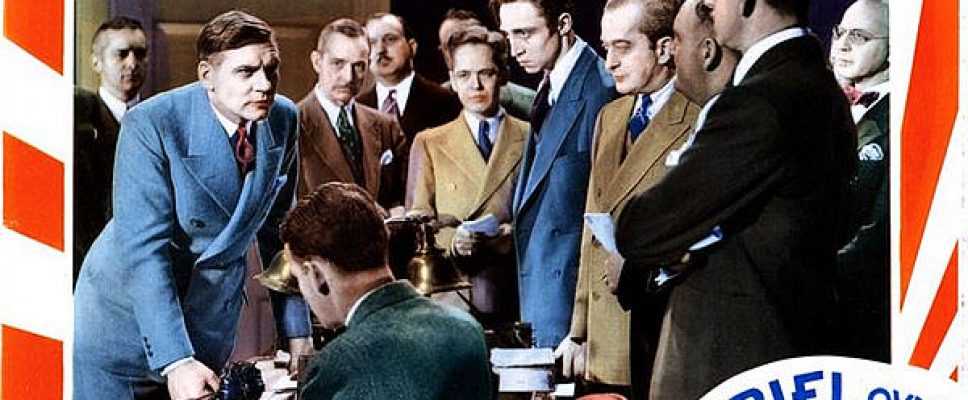Gabriel Over The White House (1933)
Sometime later this year, I hope to finish and release “Hollywood Gone Wild,” a follow-up to “Writers Gone Wild.” This is one of the stories that will appear in the book, about a movie that was one of the weirdest, and frankly freakiest, collaborations between Washington and Hollywood.
Politics can make strange bedfellows sometimes, but this is ridiculous: a Republican newspaper mogul and a Democratic president collaborate on a movie that argues that American can solve the Depression by a dictatorship.
But that’s only the start of the rabbit hole you’ll fall into watching “Gabriel Over the White House.” Walter Huston plays President Judson Hammond, a slick party hack who bore a strong resemblance to the late President Warren Harding. Hammond ignores his duties, brings his mistress into the White House (as his “assistant”), and ignores the jobless and gangsters by calling them “local problems.”
Then he crashes his car and is visited by the archangel Gabriel, played by celestial music, a blowing curtain and a shaft of light. Divinely inspired, Hammond becomes fiercely dedicated to solve the nation’s problems.

In a stirring speech to Congress, he outlines his program to reform America, and declares that “if what I plan to do in the name of the people makes me a dictator, then it is a dictatorship based on Jefferson’s definition of democracy: a government for the greatest good, of the greatest number.”
When the lawmakers objects, Hammond declares martial law, shuts down Congress, and launches into a Roosevelt-inspired wet dream: he suspends home foreclosures, creates an Army work corps to employ the unemployed on public projects, executes the gangsters after a military tribunal (by firing squad, with the Statue of Liberty in the background) and bullies nations into paying their World War I debts through a display of military might by sending Navy biplanes to bomb a battleship. The attack takes on an air of prophecy with its shots of the Japanese ambassador watching.
“Gabriel” was a product of its times. The world had been mired in a Depression for several years. The Soviet Union made socialist and progressive politics look good, and Mussolini was promoted as making the trains run on time in Italy. Sure, they were jailing and killing anyone who didn’t like it, but you can’t make a socialist omelet without breaking a few heads.
Back in capitalist Hollywood, the script caused problems between Hearst, who financed the production, and MGM studio chief Louis B. Mayer, who called it “wildly reactionary and radical to the Nth degree.” Changes to the script were negotiated, in which Hammond’s mistress, Pendie, keeps her job but becomes engaged to his first secretary, and his threat to bomb the nations into submission was softened. Also cut was the original ending: when Hammond reverts to his original personality and decides to cancel his policies, Pendie murders him!
Hearst objected to the softening of the political message, but he was ignored. Not ignored was Roosevelt, who was shown a preview and suggested changes. Eager to cultivate the support of the new and highly popular president, MGM agreed.
Released soon Roosevelt’s inauguration, “Gabriel” was praised by reviewers and was a box-office hit. But its mix of political satire (always short-lived) and bizarre fantasy gave it a short shelf life. After all, who would believe a president would try suspects using a military tribunal?

